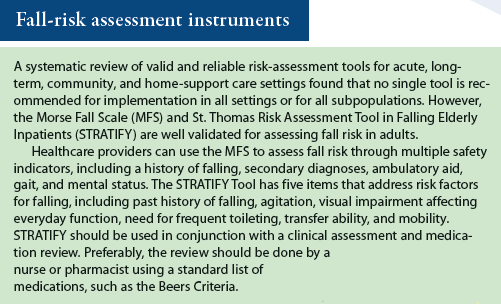More About Dementia Fall Risk
More About Dementia Fall Risk
Blog Article
Not known Details About Dementia Fall Risk
Table of ContentsDementia Fall Risk Fundamentals ExplainedAn Unbiased View of Dementia Fall RiskUnknown Facts About Dementia Fall RiskThe Definitive Guide to Dementia Fall RiskThe 10-Second Trick For Dementia Fall Risk
You may be nervous because you've had a loss prior to or due to the fact that you've observed you're starting to really feel unstable on your feet. You may have seen adjustments to your health, or simply feel like you're reducing a little. Whatever the reason, it isn't uncommon to come to be cautious and lose confidence, and this can quit you doing things you made use of to do and make you feel much more separated.If you have actually had a loss or you have actually started to feel unsteady, tell your doctor even if you really feel fine or else. Your doctor can examine your equilibrium and the way you stroll to see if enhancements can be made. They may have the ability to refer you for a drops danger analysis or to the drops prevention service.
This info can be obtained via meetings with the person, their caregivers, and a testimonial of their medical documents. Begin by asking the specific concerning their background of falls, including the frequency and circumstances of any kind of current drops. Dementia Fall Risk. Ask about any flexibility issues they might experience, such as unstable or difficulty walking
Conduct a comprehensive evaluation of the individual's medicines, paying certain focus to those understood to increase the danger of falls, such as sedatives or medications that lower high blood pressure. Determine if they are taking multiple medications or if there have been recent adjustments in their drug routine. Review the person's home setting for prospective dangers that might enhance the risk of drops, such as bad lights, loose carpets, or lack of grab bars in the restroom.
Dementia Fall Risk Can Be Fun For Everyone
Overview the individual through the fall threat analysis kind, discussing each question and taping their responses properly. Compute the complete risk rating based on the feedbacks supplied in the evaluation type.
This strategy might include workout programs to boost strength and equilibrium, drug adjustments, home adjustments, and references to various other specialists as needed. On a regular basis keep track of the person's progression and reassess their threat of drops as needed. Customize the care plan based upon adjustments in their wellness condition or home atmosphere. Provide recurring education and check these guys out assistance to advertise security and decrease the threat of drops in their day-to-day living activities.
Lots of studies have shown that physical therapy can assist to reduce the risk of falling in grownups ages 65 and older. In a brand-new study (that checked out drops risk in ladies ages 80 and older), scientists calculated the economic effect of picking physical therapy to stop falls, and they located that doing so conserves $2,144, consisting of all the hidden costs of your time, discomfort, missed out on life occasions, and the bucks spent for solutions.
The Single Strategy To Use For Dementia Fall Risk
Evaluating your equilibrium, stamina, and walking ability. A home safety and security evaluation. Based on the assessment results, your physical specialist will certainly develop a plan that is customized to your particular demands.
Older grownups that have difficulty strolling and speaking at the exact same time go to a higher risk of dropping. Dementia Fall Risk. To help increase your safety and security during day-to-day activities, your physiotherapist might create a training program that will test you to preserve standing and strolling while you do one more task. Instances include strolling or standing while counting backward, having a discussion, or carrying a bag of grocery stores
Establish objectives for increasing their physical activity. Exercise a lot more to raise their strength and balance. These try this web-site programs usually are led by volunteer trainers.
The Basic Principles Of Dementia Fall Risk

Measles, or rubeola, is an extremely contagious, acute viral infectious condition brought on by the measles infection. Some people believe of measles as simply a breakout and high temperature that clears in a couple of days; nonetheless, measles can trigger major health and wellness problems, particularly in children more youthful than 5-years-old. The ideal defense versus measles is the measles, mumps, and rubella (MMR) vaccine.
Falls are a common source of injury amongst older grownups. According to the CDC, in one year alone, fall-related injuries contributed to over $50 billion in clinical expenses (Dementia Fall Risk). In medical facility setups, older adults are at particularly high risk of falls since their minimized flexibility from being confined to a space or bed.
The Ultimate Guide To Dementia Fall Risk

She has no history of drops, her gait is consistent, and she voids with no problems. The previous nurse states that she calls for help to the bathroom when she needs to go.
Examples of usual loss interventions/measures consist of: Making certain a client's essential items are within reach. Placing the person's bed rails up with the alarm system on. Aiding a patient while they're standing up from bed. Past understanding how to utilize the Johns Hopkins Autumn Risk Assessment Device, it is essential that facilities incorporate its use into a more extensive fall prevention plan.
Report this page